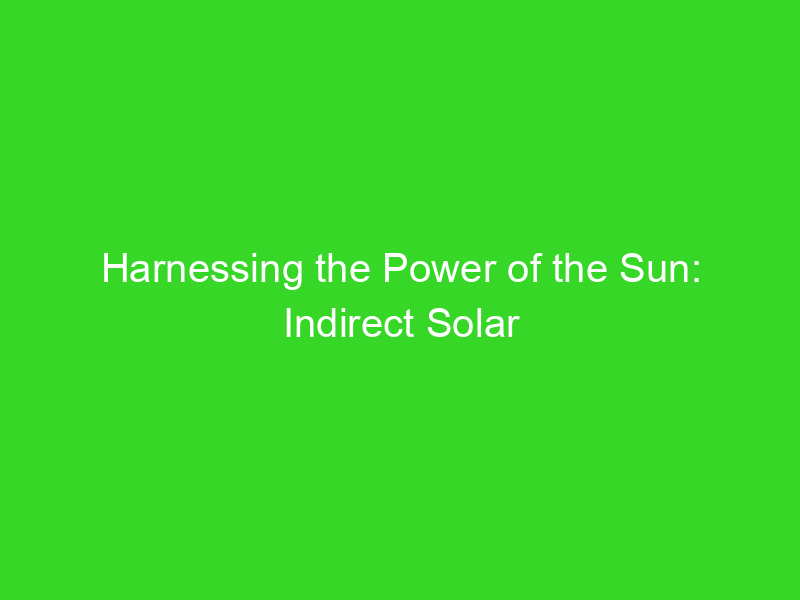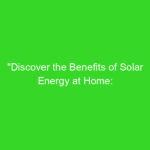
Indirect Solar Energy: Harnessing the Power of the Sun
The sun is the ultimate source of renewable energy, and harnessing its power is a topic of much interest in today's world. Direct solar energy, such as solar panels, is a popular way to collect this energy, but there's another way to harness the sun's power: indirect solar energy. In this article, we'll take a closer look at indirect solar energy, what it is, how it works, and its benefits.
What is Indirect Solar Energy?
Indirect solar energy refers to the processes that use the sun's energy indirectly to generate electricity or heat. This is usually done by using a secondary medium, such as water or air, to transfer the heat or energy from the sun to a device that can use it. There are two main types of indirect solar energy: passive solar energy and concentrated solar power.
Passive Solar Energy
Passive solar energy involves designing buildings or structures to take advantage of the sun's energy to heat or cool the space. This is done by using materials and design features that absorb, reflect, or distribute solar energy to regulate the temperature inside the building. Examples of passive solar energy include south-facing windows, thermal mass, and shading devices.
Concentrated Solar Power (CSP)
Concentrated solar power, or CSP, is a technology that uses mirrors or lenses to focus the sun's energy onto a small area, creating heat that can then be used to generate electricity. CSP systems can be used on a large scale, such as in solar power plants, or on a smaller scale, such as in residential systems.
How Does Indirect Solar Energy Work?
The basic principle of indirect solar energy is to use a secondary medium, such as water or air, to transfer the heat or energy from the sun to a device that can use it. In passive solar energy, this is done by designing the building or structure to absorb, reflect, or distribute solar energy to regulate the temperature inside. In CSP systems, mirrors or lenses are used to concentrate the sun's energy onto a small area, creating heat that can then be used to generate electricity.
Benefits of Indirect Solar Energy
Indirect solar energy has several benefits, including:
Reduced Carbon Footprint
Indirect solar energy does not emit any greenhouse gases, making it a clean and sustainable source of energy. This means that it can help reduce the carbon footprint of buildings and power plants, leading to a cleaner and healthier environment.
Cost-Effective
Indirect solar energy systems can be cost-effective over the long term, as they require little maintenance and have a long lifespan. Passive solar energy systems, in particular, can significantly reduce energy bills by reducing the need for heating and cooling systems.
Versatile
Indirect solar energy can be used in a variety of applications, from heating and cooling buildings to generating electricity. CSP systems can be used on a large scale in solar power plants, while passive solar energy can be integrated into building design.
Reliability
Indirect solar energy systems are reliable and have a long lifespan, making them a good investment for homes and businesses. Passive solar energy systems, in particular, are low-maintenance and can provide a consistent source of energy for years to come.
Conclusion
Indirect solar energy is a promising technology that has the potential to revolutionize the way we generate and use energy. Whether it's through passive solar design or concentrated solar power, harnessing the power of the sun can help us reduce our carbon footprint, save money, and create a more sustainable future. As we continue to explore new ways to use renewable energy, indirect solar energy will undoubtedly play an important role in our efforts to protect the planet and secure a better future for generations to come.





